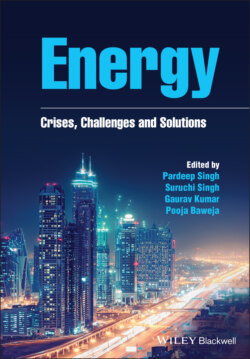Читать книгу Energy - Группа авторов - Страница 35
2.3.2 Wind Energy
ОглавлениеHarnessing energy from wind is one of the oldest technologies. Wind power has been the second dominated technology in the domain of renewable energy technologies in recent decades. Due to reduction in cost, its usage is increasing worldwide. Since 2000, wind power has increased at an average compound annual growth rate of >21% (IRENA 2019c). Using wind energy, electricity can be generated by two types of technologies, namely onshore and offshore. As per (IRENA 2020b), worldwide wind‐generation capacity including onshore and offshore has increased to 623 GW by 2019 as compared with 7.5 GW in 1997 which is a factor of >80 in the last 22 years. In future, the combination of wind and solar energy can transform the global energy sector. Around 35% of the total electricity requirement can be generated by wind power (onshore and offshore), and it can become one of the major sources of electricity generation by 2050.
Advances in the wind industry can be realized from the milestone achievements in the last four decades. This industry has seen developments with respect to installations, advancement in technologies along with cost reduction. A milestone in the wind industry took place in 2018, with global installed wind capacity of 564 GW and requirement of 1.2 million man power was generated in the sector. In 2019, commercially available offshore wind turbines have reached 10 MW capacity (IRENA 2019a).
Power generation from wind is also geographical location dependent as was solar power generation. Globally, speed of the wind varies in different locations and best locations are the remote ones. Apart from location, size of turbine and length of the blades determine the amount of electricity that can be produced from the wind energy. Further, output of the wind turbine is also proportional to rotor dimensions and cube of wind speed.
